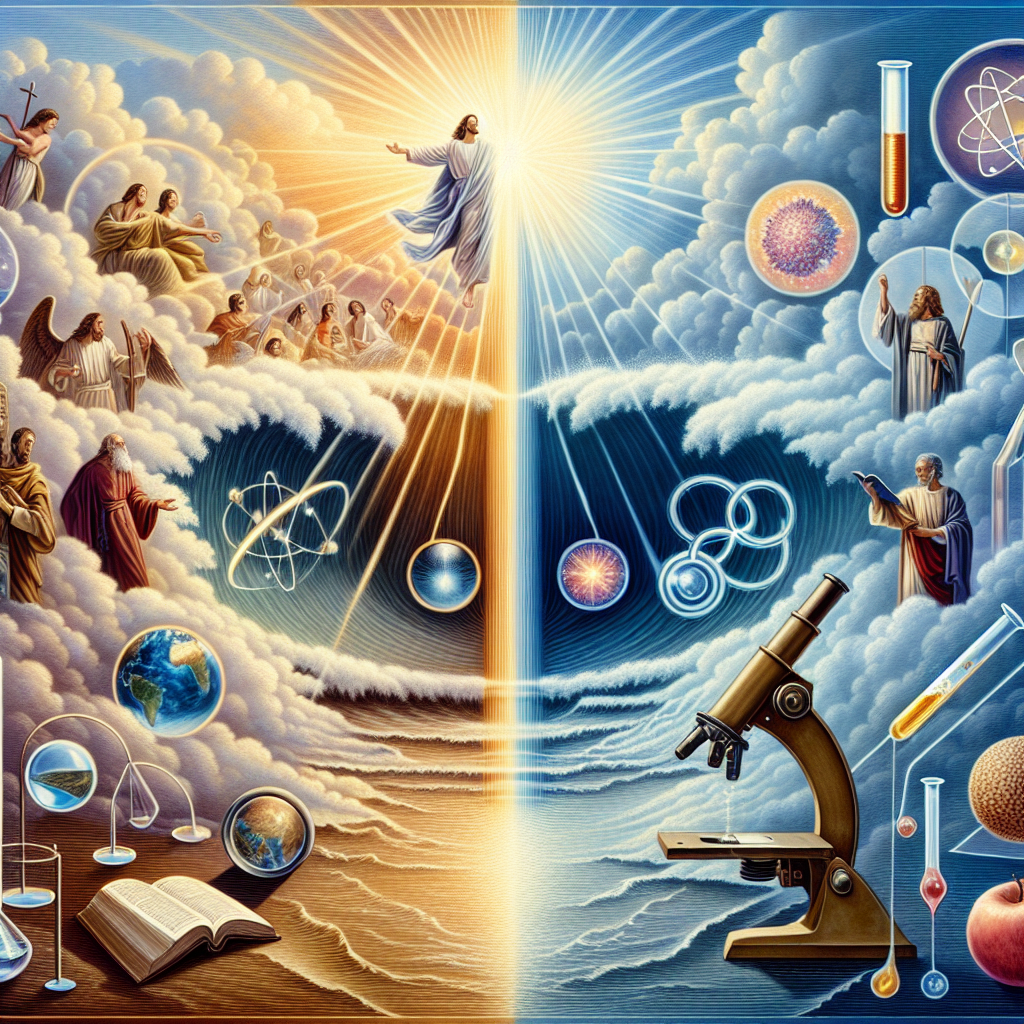Bridging Belief and Discovery: Exploring the Intersection of Biblical Miracles and Scientific Understanding
In an era characterized by rapid scientific advancement and a deeper understanding of the natural world, discussions often emerge about the relationship between faith and empirical evidence. Specifically, the miracles described in biblical texts can sometimes seem at odds with the principles of science. However, a closer examination reveals an intriguing intersection where belief and discovery can coexist, offering a compelling narrative that encourages exploration, dialogue, and deeper understanding of both faith and science.
The Nature of Miracles
Biblical miracles, such as the parting of the Red Sea, the resurrection of Lazarus, and the feeding of the 5,000, serve as powerful stories of divine intervention that shape the spiritual lives of many. For believers, these events are not merely historical accounts or metaphorical teachings; they embody the presence and power of God engaging with humanity. Such miracles are often seen as expressions of faith that transcend human understanding, pointing to a divine reality that invites believers to trust in the impossible.
At the same time, miracles raise profound questions that have intrigued theologians and scientists alike: Can events that defy natural laws truly occur? What do these narratives imply about the nature of God, the universe, and human existence?
The Role of Science in Understanding Miracles
Science, fundamentally, is the pursuit of knowledge through observation, experimentation, and rational analysis. It seeks to understand the "how" of the universe, explaining phenomena through established laws of nature. As such, it often focuses on finding natural explanations for events that may have once been considered miraculous. This does not necessarily undermine the value of faith but rather provides tools through which believers can understand their experiences in rich, multifaceted ways.
For instance, the phenomenon of healing, often attributed to miracles in the Bible, has sparked considerable interest from both medical and religious perspectives. While science examines the physiological mechanisms behind recovery, faith traditions may view these events as manifestations of divine grace, reinforcing the belief that human life is interwoven with a greater spiritual reality.
Bridging the Gap
Rather than viewing faith and science as opposing forces, we can embrace them as complementary. The intersection of biblical miracles and scientific understanding calls for a dialogue that acknowledges the value of both realms.
-
Open-Minded Inquiry: Just as scientists approach the mysteries of the universe with curiosity, believers can approach the miracles of their faith with an inquisitive mindset. This does not necessitate abandoning belief; instead, it invites devotees to explore how their faith might inform and inspire scientific inquiry.
-
Symbolism and Interpretation: Many scholars argue that the language of miracles often carries symbolic meaning rather than being strictly literal. The story of Jesus turning water into wine can be understood not only as a miraculous event but also as a metaphor for transformation and abundance. This symbolic interpretation can coexist with scientific understandings of fermentation and chemistry, showcasing how faith and reason can enrich one another.
-
Finding Common Ground: Both scientists and religious adherents share a common goal: understanding the world and our place within it. Collaborative approaches, such as bioethics discussions that consider both scientific advancements and moral implications, can foster a shared commitment to improving human well-being.
-
The Mystery of Existence: Perhaps the greatest bridge between belief and discovery lies in the shared recognition of mystery. Science reveals the awe and wonder of the universe, while faith accommodates the ineffable and transcendent experiences of life. Acknowledging that some questions may remain unanswered fosters an appreciation for both perspectives.
A Positive Future
As we navigate the complexities of belief and discovery, it is essential to cultivate a spirit of openness and respect. Scientific inquiry can inspire faith, while belief can provide a moral compass that prioritizes human dignity amid technological advancements. Each domain offers insights that can enhance our understanding of existence, community, and the divine.
By fostering dialogue between biblical miracles and scientific inquiry, we not only enrich our personal beliefs but also deepen our collective understanding of humanity’s journey. Collectively embracing the quest for knowledge, whether through the lens of scripture or scientific exploration, encourages a sense of wonder that can inspire generations to come.
In this harmonious exploration, believers and scientists alike can find encouragement in a shared journey of discovery, bridging the realms of the known and the mysterious, ultimately unveiling the profound connections between faith and the cosmos.
Explore and dig up answers yourself with our BGodInspired Bible Tools! Be careful – each interaction is like a new treasure hunt… you can get lost for hours 🙂


